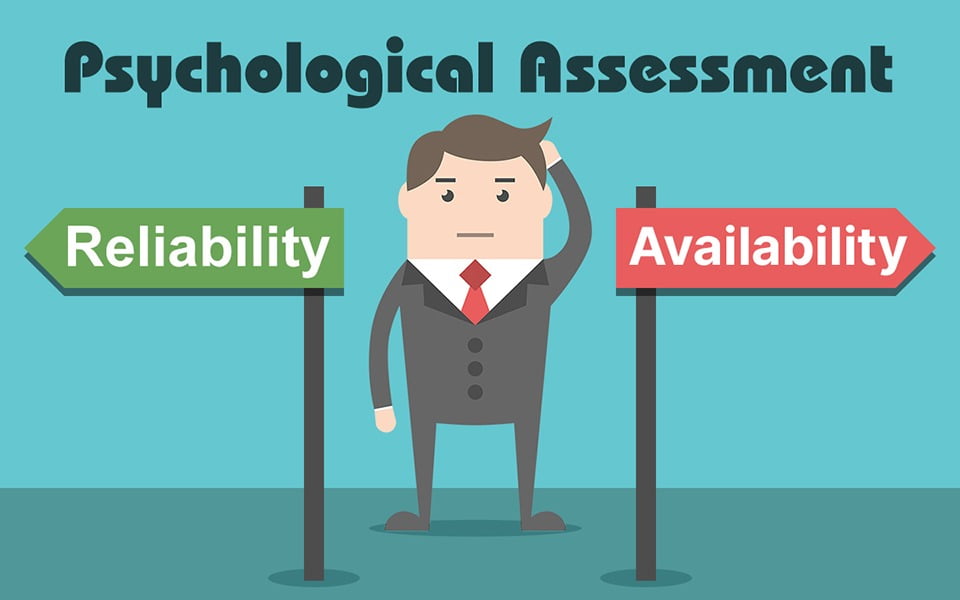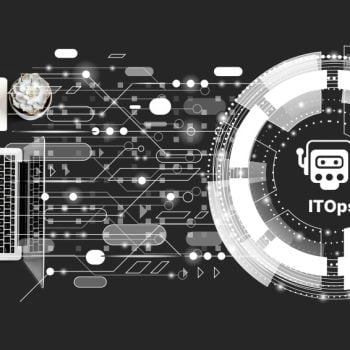Today, how do organizations navigate transformative efforts to remain competitive and adapt to market shifts? These transitions, from mergers and relocations to technological upgrades, often bring disruptions and challenges. But what role does IMACD play in managing these transitions? In this blog, you will find an In-depth examination of the vital significance of the IMACD process.
IMACD, short for Install, Move, Add, Change, and Disposal, offers a comprehensive framework for smooth organizational transitions. It integrates system installation, seamless movements, strategic additions, adaptable changes, and competent disposals, forming a robust transformational guide. IMACD plays a crucial role in upholding operational efficiency by proactively addressing transition challenges and safeguarding essential functions. It’s a systematic path for managing shifts from new system installation to outdated resource disposal, ensuring smoother changes, reducing disruptions, and streamlining transitions within the dynamic business environment.
Related blog: Risk mitigation pays big in ITAM, but how to quantify it?
Understanding the basics: IMACD explained.
IMACD is a comprehensive framework guiding organizations through transitions. Each letter embodies a crucial phase, ensuring a structured approach to change. This method fosters seamless adaptation during shifts like mergers or technological upgrades, bolstering operational continuity. IMACD’s distinct stages, from installation to disposal, empower productive transition management, enhancing operational productivity and resilience.
The crucial nature of seamless organizational transitions must be noticed. Mishandled transitions lead to employee dissatisfaction, operational downtime, and financial inefficacy. However, strategic IMACD practices provide a remedy. Organizations can address these issues through structured processes, achieving smoother transitions, reduced disruptions, and improved productivity.
Unlocking Excellence: The Benefits of Effective IMACD Implementation
Organizations must navigate transitions with precision and skill in the changing business environment, where change is a constant companion. This is where the IMACD process is as a guiding light. The systematic approach offered by IMACD isn’t just about managing transitions; it’s about optimizing them for unparalleled benefits.

Seamless Operations: IMACD ensures continuity during transitions by maintaining essential functions, leading to minimal disruptions and enhanced operational performance.
Enhanced Employee Satisfaction: IMACD’s systematic approach fosters clarity and readiness, reducing employee uncertainty and anxiety. This, in turn, contributes to higher morale, reduced stress, and increased productivity during times of change.
Reduced Downtime, Increased Efficiency: IMACD streamlines the transition process, minimizing operational downtime and leading to increased operational excellence as organizations swiftly adapt to changes.
Optimal Resource Utilization: IMACD ensures resources are optimally used, minimizing wastage and maximizing returns on investment.
Risk Mitigation: Through careful planning and execution, IMACD shields organizations from unexpected disruptions and losses, mitigating the risks associated with change.
Effective IMACD implementation offers various advantages for success in a dynamic business landscape. Embracing IMACD’s structured approach takes organizations towards enhanced output, adaptability, and sustained growth.
Assessing the Current Transitions Process: Enhancing Organizational Efficiency
Transitions, whether driven by mergers, technological advancements, or relocations, can impact operational efficiency, employee morale, and overall success. Here, we delve into the significance of assessing the current transition process and offer insights into optimizing it for better outcomes.
Understanding the Landscape: Evaluating the current transition process involves gaining a comprehensive overview of the existing procedures, resources, and strategies. This provides a foundation for identifying areas of improvement and potential gaps.
Employee Input: Engaging with employees who directly experience transitions yields valuable insights into the performance of the process. Their feedback sheds light on challenges and suggestions for smoother transitions.
Data-Driven Insights: Utilizing data and metrics allows organizations to objectively measure the impact of transitions on various aspects of the business. Data provides informed decision-making, whether operational downtime, financial outcomes, or employee satisfaction.

Continuous Optimization: Assessing the transition process is an ongoing commitment to improvement. Organizations can enhance their transition management and drive sustained success by benchmarking against industry best practices and constantly refining strategies.
Crafting a Strategic IMACD Approach: A Roadmap to Success
Crafting a well-defined strategy is crucial in the business landscape. Beyond managing transitions, it transforms them into organizational growth and optimization catalysts. This exploration delves into the core components of developing a strategy that guarantees seamless transitions and lasting success.
Clear Objectives: A successful IMACD strategy begins with well-defined goals, steering efforts towards specific outcomes such as reduced downtime, improved employee satisfaction, or optimized resource use.
Resource Allocation: Allocating the right resources—financial, human, and technological—is essential for a successful IMACD strategy, ensuring smooth execution and minimizing obstacles.
Realistic Timelines: Setting achievable timelines for each phase of IMACD keeps transitions on track, preventing undue pressure on teams and maintaining momentum.
Cross-Functional Collaboration: Transitions involve collaboration among diverse departments, promoting a holistic approach, breaking down silos, and encouraging cooperation.
Change Management and Communication: Integrating change management and communication plans eases employee transitions by addressing concerns, providing training, and ensuring clear communication.
A strategic IMACD approach streamlines transitions for success, minimizes disruptions, and propels innovation and growth amid change.
Charting Your Success: Navigating the Transition Journey
Navigating the transition cycle within the context of the IMACD process involves understanding how each stage unfolds and interacts to facilitate a smooth and structured transition of IT resources. The IMACD process encompasses five key steps, each representing a critical IT management and resource handling aspect. These stages are:
Installation
The Installation phase involves setting up and configuring new hardware or software components within the IT environment. This could include deploying new servers, workstations, software applications, or network infrastructure. Proper installation ensures that these components are integrated correctly and function optimally. It’s the supporting element of a well-structured and reliable IT ecosystem, where emphasis on specific aspects ensures technological excellence and operational success.
Move
The Move phase deals with relocating existing IT resources. This can include moving physical hardware to a different location, such as when an office is relocated or reconfigured. It can also transfer digital assets, such as data and software, from one server or cloud environment to another.
Add
Adding resources is about incorporating new IT elements into the existing infrastructure. This could be introducing new software applications, hardware upgrades, or network expansions. The Add phase ensures these additions seamlessly integrate with the current IT ecosystem.
Change
Change management is a pivotal component of IT operations. The Change phase involves modifying or updating existing hardware or software configurations to accommodate evolving business needs or to address issues. Changes could include adjusting network settings, upgrading software versions, or enhancing security protocols.
Decommissioning
The Decommissioning phase focuses on retiring or removing hardware and software components that are no longer needed or have become obsolete. This is essential for optimizing resource utilization and minimizing security risks associated with outdated systems. Proper decommissioning also includes data disposal and ensuring sensitive information is handled securely.
These five stages collectively form the IMACD process, providing a structured approach to managing IT resources across their lifecycle, from initial installation to retirement. Proficient execution of each step is crucial for maintaining an organized and secure IT environment while accommodating changes and ensuring business continuity.
Building a high-performing Transition Team:

Building a high-performing team is allied with setting the stage for success in the intricate landscape of organizational transitions. The foundation of a high-performing team lies in recognizing and defining key roles and responsibilities. This begins with a thorough assessment of the transition’s scope and intricacies. They are identifying who does what ensures that every aspect of the transition is accounted for and that there is no ambiguity regarding individual responsibilities. Once roles are defined, allocating team members based on their strengths and expertise is essential, enhancing performance and team morale. Appointing capable leaders within the team serves as a guide, decision-maker, and problem solver, ensuring that the transition progresses smoothly.
Strategic communication is vital for high-performance teams. Open channels encourage idea-sharing and rapid problem-solving. Clear goals give purpose and direction, helping team members understand their roles in the transition’s success. Frequent meetings track progress and address challenges, keeping the change on track. A culture of problem-solving builds resilience and adaptability. Feedback loops facilitate continuous improvement. Building a high-performing transition team goes beyond individuals; it’s about creating cohesion where the whole surpasses the sum of its parts.
Mastering Change Management for Seamless Transitions
Resistance to change is a natural human reaction, often rooted in uncertainty and fear of the unknown. Change management acknowledges this resistance and actively addresses it. It involves identifying sources of resistance, whether they stem from employees, teams, or organizational culture, and developing strategies to mitigate these barriers. Clear communication, empathy, and support are essential. Change management creates an environment where individuals are given the time and resources to adapt, and it involves continuous monitoring and feedback to proactively manage resistance throughout the transition journey.
Successful transitions are often the result of well-executed change management best practices. These practices are informed by years of research and experience in managing organizational change. They include setting clear objectives, engaging stakeholders at all levels, maintaining flexibility and adaptability, and measuring success through defined key performance indicators (KPIs). Change management ensures that transitions are guided by a strategic plan, fostering stakeholder commitment and ownership and allowing for course correction and optimization.
Identifying and Mitigating Potential Risks during Transitions:
Amidst the competitive domain of organizational transitions, achieving success is akin to navigating a complicated process. It requires a meticulous approach that revolves around the crucial concept of risk management. This multifaceted process involves not only recognizing potential risks but, even more critically, proactively addressing them to ensure an uninterrupted journey toward a seamless transformation.
Risk Assessment: Transition planning begins with a comprehensive risk assessment. This involves systematically analyzing potential pitfalls and vulnerabilities that could emerge during the transition process. Risks may include technical issues, resource constraints, budget overruns, or stakeholder resistance.
Risk Mitigation Strategies: Once risks are identified, strategic mitigation plans are implemented. These plans outline specific actions to prevent or minimize the impact of identified threats. They include allocating additional resources, establishing contingency plans, or adjusting project timelines to accommodate potential delays.
Monitoring and Response: Proactive risk management isn’t a one-time endeavor. It involves continuous monitoring throughout the transition process. This ongoing assessment ensures that emerging risks are promptly identified, and mitigation strategies are adjusted accordingly.
Strategies for Handling Unexpected Challenges:
Preparing for unexpected challenges is paramount in the dynamic landscape of organizational transitions, where surprises are commonplace. Here are critical strategies for adeptly managing these unforeseen hurdles:

- Agility and Adaptability: Unforeseen challenges are an inherent aspect of transitions. Change seldom unfolds precisely as planned. Streamlined transition management embraces agility and adaptability. It empowers teams to pivot quickly when faced with unexpected hurdles.
- Collaborative Problem-Solving: Challenges are best addressed through collaborative problem-solving. Transition teams should be equipped with the tools and processes to identify root causes, generate creative solutions, and implement changes swiftly.
- Resource Allocation: Handling unexpected challenges may require reallocating resources or adjusting priorities. A successful strategy involves evaluating available resources and determining how they can be optimally utilized to overcome challenges without jeopardizing the overall transition.
- Continuous Improvement: Challenges provide valuable learning opportunities. Transition management involves a commitment to continuous improvement. Teams should conduct post-transition reviews to identify lessons learned and implement enhancements for future transitions.
Managing risks and challenges amid transitions mirrors the art of navigating uncharted waters. It’s a constantly evolving process that harmonizes rigorous risk assessment and mitigation with the flexibility and adaptability needed when the unexpected arises. Proficient transition management protects the journey and transforms challenges into catalysts for greater resilience and organizational expansion.
Unlocking the Perfect Technology Solutions
Navigating the ever-evolving terrain of IT, and finding and implementing the ideal technology solutions is akin to discovering the right tools for a complex task. This process encompasses two pivotal phases:
Assessing Technology Requirements for IMACD Success:
Evaluating the technology prerequisites essential for a successful IMACD process involves systematically examining current IT infrastructure and future scalability demands. It Includes:
- In-Depth Evaluation: The journey commences with a comprehensive evaluation of technology needs imperative for the seamless implementation of IMACD. This involves thoroughly examining existing IT infrastructure, pinpointing gaps, identifying bottlenecks, and foreseeing potential challenges during the IMACD process.
- Scalability and Compatibility: The assessment includes considerations of scalability and compatibility. Can the chosen technology scale up or down as needed? Does it seamlessly integrate with existing systems or require substantial modifications? These questions ensure the technology aligns perfectly with the organization’s long-term goals and current setup.
- Security and Compliance: Security is paramount in today’s digital landscape. Assessing the technology’s ability to meet security requirements and compliance standards is non-negotiable. It’s about safeguarding sensitive data, ensuring data privacy, and mitigating potential risks associated with IT changes.
- Exploring the Array of Software and Tools: Exploring the array of software and tools becomes pivotal in the quest for optimal technology solutions. This journey involves deep diving into the market to uncover solutions that align seamlessly with organizational needs and aspirations.
- Market Analysis: Once technology needs are defined, the next step involves deep diving into the vast available software and tools market. This exploration phase includes researching the market to identify potential solutions that align with the organization’s requirements.
- Feature Comparison: Beyond mere availability, conducting a feature-by-feature comparison is essential. This entails assessing how each software or tool addresses the identified technological needs. Key factors include functionality, user-friendliness, scalability, and cost-effectiveness.
- Vendor Evaluation: Evaluating the vendor or provider is as critical as the software for larger-scale implementations. This step involves assessing the vendor’s reputation, customer support, and track record in delivering successful solutions.
- Pilot Testing: Before committing to a technology solution, it’s often prudent to conduct pilot testing. This real-world experimentation helps validate the technology’s capability to meet the organization’s specific IMACD requirements.
In conclusion, selecting the right technology solutions is a multifaceted process that has to meet the organization’s unique technology needs with the vast landscape of available software and tools. It’s a process driven by continuous assessment and exploration, ensuring that the chosen technology becomes an enabler of success in the evolving industry of IMACD implementation.
Streamlining Supplier and Vendor Management in the IMACD Process
Managing suppliers and vendors in the IMACD process involves several necessary steps:
- Selecting Suppliers and Vendors: Choose partners whose offerings align with your IMACD needs, including evaluating their reputation, financial stability, and ability to meet project requirements.
- Negotiating Contracts: Establish clear expectations, pricing, and contract terms with chosen suppliers and vendors to align everyone with project goals.
- Monitoring Performance: Continuously assess supplier or vendor performance using established indicators to ensure quality and optimal outcomes.
- Building Relationships: Through transparent communication and collaboration, foster strong partnerships with suppliers and vendors.
- Mitigating Risks: Identify potential risks tied to suppliers and vendors and create backup plans to ensure continuity in case of disruptions.
- Continuous Improvement: Regularly improve and reduce costs by assessing and optimizing supplier relationships.
In conclusion, advanced supplier and vendor management are critical in IMACD processes. Careful selection, clear contracts, ongoing monitoring, and continuous improvement ensure smoother, more savvy IT initiatives with minimal risk.
Related blog: Why ITSM needs the human touch in the age of AI
Conclusion: Empowering Your Transition with IMACD
In summary, IMACD stands as a robust framework for adeptly guiding organizational transitions. The path to empowerment in your transition journey encompasses understanding the core principles of IMACD, thoroughly assessing your current transition processes, strategically crafting a resilient plan, and skillfully leveraging appropriate tools and resources. The rewards are substantial, including elevated employee satisfaction, reduced operational downtime, enhanced cost management, and increased operational outcomes. By embracing IMACD, organizations position themselves to navigate transitions confidently and pave the way for long-term and enduring success


















